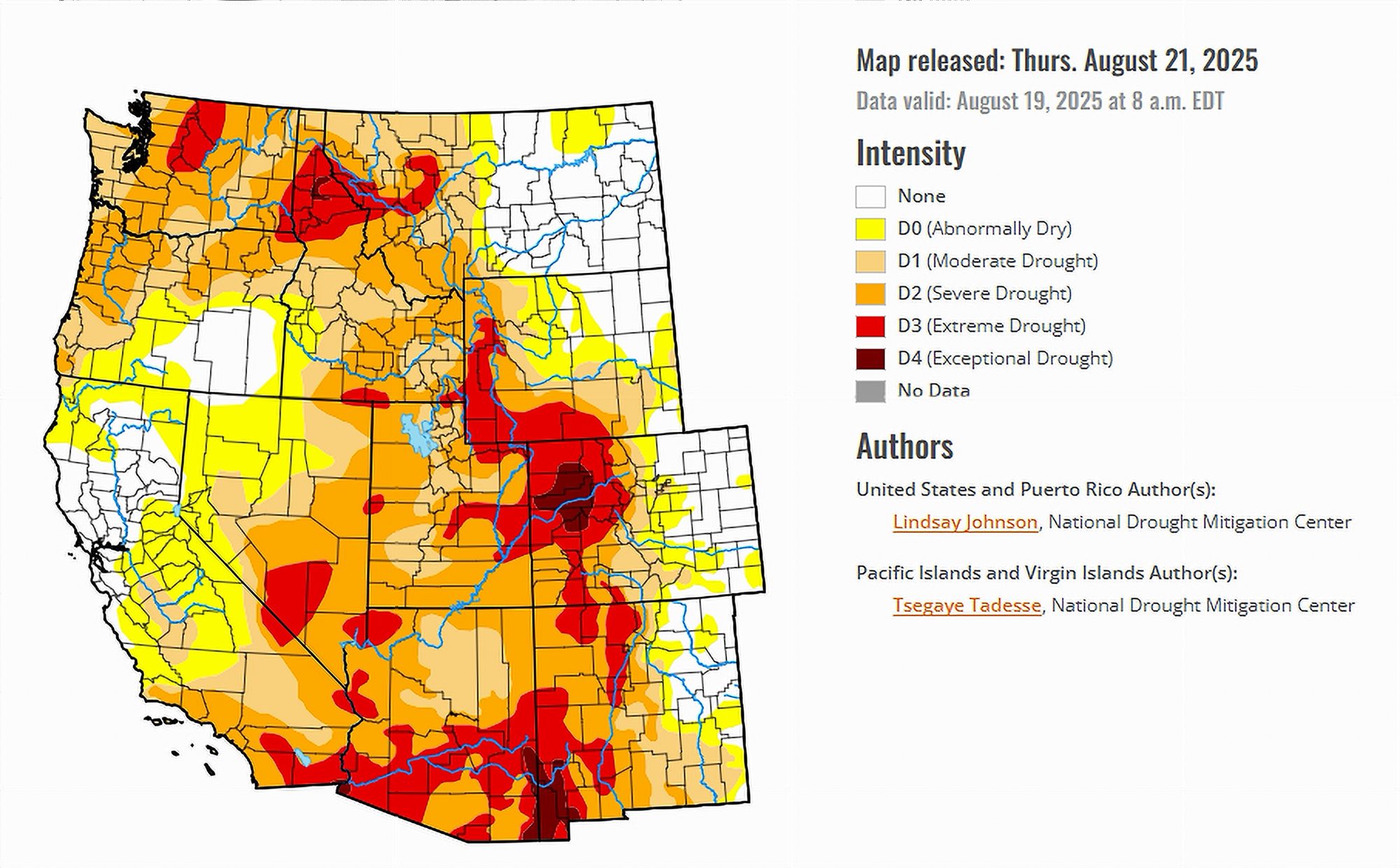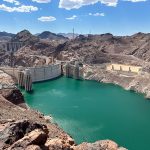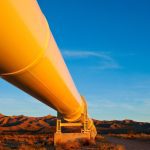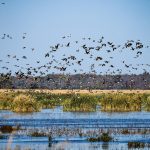- Heat and dryness expanded drought nationwide.
- Severe to exceptional drought gripped Arizona, California, and New Mexico.
- Colorado and Wyoming saw worsening wildfire conditions.
- Monsoon rains missed much of the Southwest.
Saturday, August 23, 2025 — Between August 13 and 19, much of the United States experienced hotter-than-average temperatures combined with limited rainfall, leading to widespread drought expansion. The U.S. Drought Monitor reported that temperatures were generally 1 to 5 degrees above normal, with portions of the High Plains and Midwest reaching 5 to 10 degrees above normal.
reported that temperatures were generally 1 to 5 degrees above normal, with portions of the High Plains and Midwest reaching 5 to 10 degrees above normal.
Rainfall was scarce across large areas, though some regions bucked the trend. The Pacific Northwest coastline received 1 to 3 inches above normal precipitation, and the Southeast saw localized heavy rainfall from thunderstorms. A series of storms also delivered 2 to 5 inches of rain across parts of South Dakota, Minnesota, and Illinois, improving conditions there.
Despite these pockets of relief, severe to exceptional drought (D2–D4) persisted across wide swaths of the West, especially in California, Nevada, Arizona, and New Mexico. According to the report, “hot, dry weather pushed drought to expand in Oregon, Washington, and Idaho.” The combination of heat and dryness fueled large wildfires in California and the Southwest, where vegetation remained dangerously dry.
Conditions in the Colorado River Basin.
The seven Colorado River Basin states—Arizona, California, Colorado, Nevada, New Mexico, Utah, and Wyoming—continue to feel the strain of worsening drought, with fire danger elevated across much of the region.
Arizona and New Mexico.
Monsoon rains largely missed Arizona and New Mexico during the week, causing drought to intensify. Severe (D2) to extreme (D3) drought expanded northward and eastward, with extreme heat pushing soil and vegetation stress even higher. Arizona’s Dragon Bravo Fire, now burning more than 145,000 acres, reflects the dangerous mix of dry fuels and gusty winds.
California and Nevada.
Southern California remained locked in extreme (D3) to exceptional (D4) drought with no notable change. Exceptional drought also lingered in parts of Nevada, where prolonged dryness and heat kept conditions stable but severe. California’s Gifford Fire has already burned around 130,000 acres, and red-flag warnings continued across desert areas where temperatures topped 110 degrees. Though little change was reported this week, Nevada remains mired in long-term drought conditions. Dryness is entrenched in both rangeland and mountain watersheds, keeping the state vulnerable to further wildfire risk.
Colorado.
Drought expanded along Colorado’s Front Range and into the southwest portion of the state. The report noted that “persistent heat and limited rainfall drove drought deeper,” contributing to the spread of the Lee Fire, which has burned more than 137,000 acres. This fire now ranks among the largest in Colorado’s history.
Wyoming.
Wyoming experienced worsening drought as abnormally dry conditions spread across central counties. New pockets of extreme drought emerged in the northwest, while rangeland fires broke out under hot and windy conditions.
Utah.
Southern Utah and areas along the Colorado and Wyoming borders recorded drought expansion. The state remains a critical indicator for Colorado River inflows, and declining precipitation there adds to concern for regional water supplies.
New Mexico.
Like Arizona, New Mexico saw drought intensify as monsoon rains largely failed to materialize. Severe to extreme drought continued to spread across the northern and eastern portions of the state.
The Outlook.
Looking ahead from August 21 to 26, the forecast calls for heavy rainfall along the East Coast, while much of the West—including the Colorado River Basin—will remain mostly dry. Only scattered areas of the central Rockies and parts of New Mexico may receive localized rainfall between 2 and 4 inches.
The Climate Prediction Center’s 6-to-10-day outlook (valid August 26–30) favors warmer-than-normal conditions along the West Coast, particularly in the Pacific Northwest and northern California. For the Southwest and Rockies, the outlook shows a better chance of wetter-than-normal conditions, but long-term drought remains firmly entrenched.




